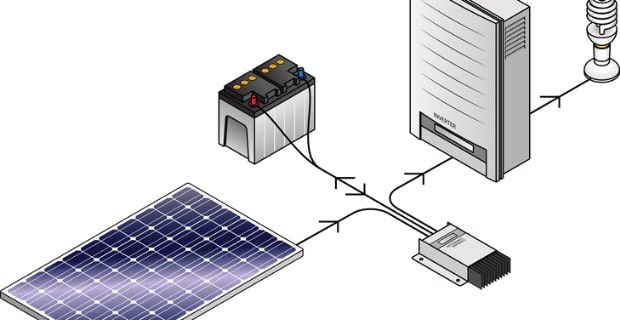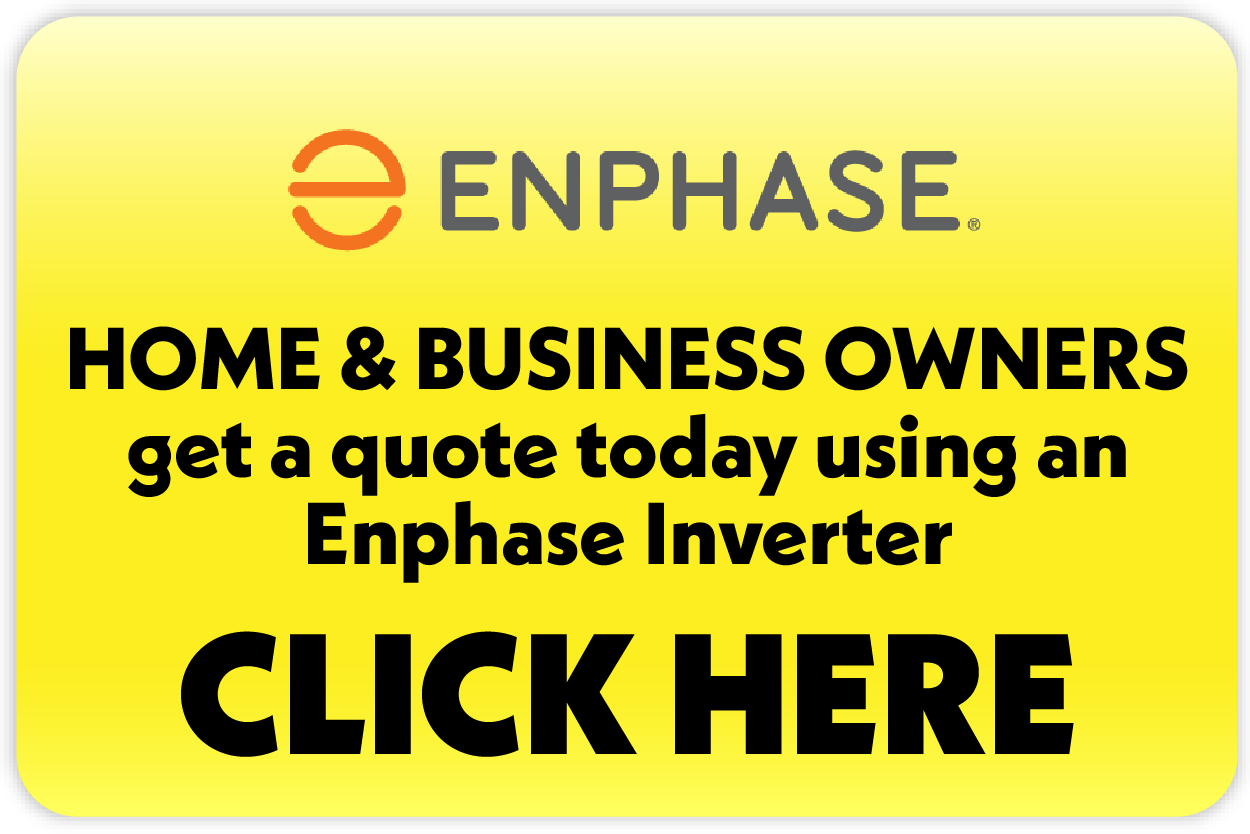
On this page
Solar power has gained tremendous popularity in Australia as an affordable and eco-friendly energy source. With increasing awareness about the need to transition towards renewable energy, many homeowners in Australia are considering installing solar panels on their rooftops. One crucial component of a solar power system is the inverter, which converts the direct current (DC) generated by solar panels into alternating current (AC) that can be used to power homes or fed back into the grid. In Australia, both single-phase and three-phase inverters are commonly used, each with its own set of advantages and disadvantages.
The majority of residential buildings in Australia use single-phase electricity, however if you have a large property or have updated your power supply especially, you might have 3-phase electricity.
What are single phase inverters?
- Single-phase electricity, used in most new houses and small businesses, is transmitted over two wires: active and neutral.
- The neutral wire is connected to the earth at the switchboard, and only one active wire will carry electricity from the grid (or your solar PV system).
- In case of a fault, the neutral wire in your house or place of business is a route back to the switchboard, where the electrical current originates. As a result, your electricity will be turned off, and you won’t risk being electrocuted. This will trip the breaker or blow a fuse.
Pros and cons of single-phase solar inverters
One crucial component of a solar power system is the inverter, which converts the direct current (DC) generated by solar panels into alternating current (AC) that can be used to power homes or fed back into the grid. In Australia, single-phase and three-phase inverters are commonly used, each with its own advantages and disadvantages.
Pros of Single-Phase Solar Inverters:
- Cost-effective: One of the significant advantages of single-phase solar inverters is that they are generally more affordable than three-phase inverters. The installation, maintenance, and replacement cost of single-phase inverters is relatively lower, making them an attractive option for budget-conscious homeowners.
- Suitable for small to medium-sized homes: Single-phase inverters are ideal for smaller homes with lower energy consumption. They are commonly used in residential properties with single-phase electricity supply from the grid. If your home has a single-phase connection, opting for a single-phase inverter can be a practical choice as it matches the electrical supply from the grid.
Simpler installation: Single-phase inverters are relatively simpler to install compared to three-phase inverters. They require less wiring and are easier to connect to the electrical grid. This can result in lower installation costs and shorter installation times, making them a convenient option for homeowners.
Cons of single-phase solar inverters:
- Limited capacity: One of the primary disadvantages of single-phase inverters is their limited capacity. They are typically designed to handle lower power loads and may not be suitable for large homes or commercial properties with higher energy consumption. If you have a high energy demand, a single-phase inverter may not be the best choice as it may not provide sufficient power output.
- Imbalance in three-phase systems: In some cases, using a single-phase inverter in a three-phase electrical system can lead to an imbalance in power distribution across the phases. This can result in uneven load distribution, increasing strain on certain phases and reducing system efficiency. It may require additional measures, such as load-balancing equipment, to mitigate this issue, which can add to the overall cost of the system.
- Limitations on export/import of excess power: Single-phase inverters may have limitations on exporting or importing excess power to or from the grid. Some electricity distribution networks in Australia may restrict the amount of power that can be exported to the grid by single-phase inverters, which can impact the financial benefits of a solar power system. This may vary depending on the location and the regulations of the electricity distribution network in your area.
Reduced performance in certain conditions: Single-phase inverters may have reduced performance in certain conditions, such as when the solar panels are shaded or when there are fluctuations in the grid voltage. They may also be more sensitive to changes in temperature and may require additional cooling measures in hot climates, which can affect their efficiency and lifespan.
What is three phase power supply or inverter?
- Businesses, older dwellings and larger homes frequently use three-phase power because it allows for more undersized, less expensive wiring and lower voltages.
- Three of the four wires that comprise three-phase power are active, and one neutral wire is grounded at the switchboard.
Pros and cons of three-phase solar inverters
Pros of Three-Phase Solar Inverters:
- Suitable for larger properties and high energy consumption: Three-phase solar inverters are designed to handle higher power loads and are ideal for larger properties or homes with higher energy consumption. They are commonly used in commercial properties, larger residential homes, and properties with a three-phase electricity supply from the grid. If you have a higher energy demand, a three-phase inverter can provide the necessary power output to meet your requirements.
- Greater efficiency and performance: Three-phase inverters generally offer higher efficiency and performance than single-phase inverters. They distribute the power output across three phases, resulting in a more balanced and efficient system. This can lead to better overall performance, higher power yields, and increased energy production, especially in larger systems with multiple solar panels.
- Flexibility in system design: Three-phase inverters provide more system design and configuration flexibility. They can be used in single-phase and three-phase electrical systems, allowing for versatile installation options. They can also accommodate various solar panel configurations and orientations, making them suitable for various installation scenarios.
Grid export/import flexibility: Three-phase inverters generally offer greater flexibility in exporting or importing excess power to or from the grid. They can often export more power to the grid, providing the opportunity for higher feed-in tariffs or credits. They may also allow for the more efficient import of power from the grid during low production periods, ensuring a stable power supply for your home.
Cons of Three-Phase Solar Inverters:
- Higher cost: One of the main disadvantages of three-phase solar inverters is that they are generally more expensive than single-phase inverters. The installation, maintenance, and replacement cost of three-phase inverters are typically higher, which may impact the overall cost of a solar power system. However, the cost difference may vary depending on the size of the system, the brand, and the specific features of the inverter.
- More complex installation: Three-phase inverters require more involved installation than single-phase inverters. They typically require additional wiring and may require changes to the property’s electrical system to accommodate the three-phase configuration. This can increase the installation time, effort, and cost, which may be a consideration for some homeowners.
- Grid connection requirements: Three-phase inverters may have specific grid connection requirements that must be met. This may include compliance with local regulations, voltage and frequency settings, and other technical specifications. Ensuring that your property meets these requirements may add to the complexity and cost of the installation.
Overkill for smaller properties: Three-phase inverters may not be necessary for smaller properties or homes with lower energy consumption. If your property has a single-phase electricity supply from the grid and your energy needs are relatively low, a three-phase inverter may be overkill and not provide significant benefits compared to a single-phase inverter.
How does a single-phase and three phase solar inverter work?
How does a single-phase solar inverter work?
Here’s a step-by-step breakdown:
- DC electricity generated by solar panels: Solar panels produce DC electricity when sunlight hits the photovoltaic cells. This DC electricity is then sent to the single-phase solar inverter for conversion.
- MPPT (Maximum Power Point Tracking): The single-phase solar inverter uses MPPT technology to track the maximum power point of the solar panels, which is the point where they produce the most electricity. This ensures that the solar panels are operating at their highest efficiency and generating the maximum amount of electricity possible.
- Conversion from DC to AC: The DC electricity from the solar panels is converted into AC electricity by the single-phase solar inverter using a process called inversion. The inverter adjusts the voltage, frequency, and waveform of the AC electricity to match the grid requirements.
- Grid connection: The AC electricity produced by the single-phase solar inverter can be used to power your home’s electrical loads. Any excess electricity can be fed back into the grid for credit or sold to the utility company. The inverter ensures that the electricity fed back into the grid is synchronised with the grid voltage and frequency.
Monitoring and safety features: Single-phase solar inverters usually come with monitoring and safety features that allow homeowners to monitor the performance of their solar power system and ensure its safe operation. These features may include real-time monitoring of energy production, remote access through mobile apps, and built-in safety mechanisms such as anti-islanding protection that prevents the inverter from feeding electricity into the grid during a power outage.
How does a 3-phase solar inverter work?
The basic operation of a 3-phase solar inverter is similar to a single-phase inverter, with the exception that it is designed to work with a 3-phase AC system. Here’s a step-by-step overview of how a 3-phase solar inverter works:
- DC electricity generation: Solar power panels generate DC electricity when exposed to sunlight. The DC electricity is then sent to the 3-phase solar inverter for conversion into AC electricity.
- MPPT tracking: The MPPT controller in the solar inverter constantly monitors the voltage and current of each solar panel in the system and adjusts the operating point to ensure maximum energy production. This is known as Maximum Power Point Tracking (MPPT), and it ensures that the solar panels operate at their peak efficiency.
- DC to AC conversion: The inverter circuit in the solar inverter converts the DC electricity from the solar panels into AC electricity. It uses power electronics such as transistors or IGBTs to switch the DC input on and off rapidly to create the AC waveform with the correct voltage, frequency, and waveform for the 3-phase AC system.
- Grid connection: The AC electricity produced by the inverter circuit is then connected to the electrical grid or the load of the building. The grid connection includes protection devices such as circuit breakers, isolation devices, and grid synchronisation features that ensure the safe and reliable connection of the solar power system to the grid.
- Monitoring and control: The LCD display and control interface on the solar inverter allows users to monitor the performance of their solar power system. It displays information such as energy production, grid voltage, and system status. Users can also access the inverter’s settings and configuration options through the control interface.
Communication and safety features: 3-phase solar inverters may come with communication interfaces such as Ethernet, Wi-Fi, or RS485 that allow remote monitoring and control of the inverter. Additionally, they are equipped with built-in safety features such as anti-islanding protection, overvoltage protection, overcurrent protection, and short-circuit protection to ensure the safe operation of the inverter and the solar power system.
Single-phase vs 3-phase solar inverters: Which is right for your home?
With the growing popularity of solar power systems in Australia, homeowners are faced with choosing the right type of inverter for their homes. Solar inverters are a crucial component of a solar power system as they convert the direct current (DC) generated by the solar panels into alternating current (AC) that can be used to power household appliances or exported to the grid. In Australia, two main types of inverters are available: single-phase and three-phase.
Know and check what are the types of inverters in Australia
Single phase inverter
Single-phase solar inverters are designed to work with single-phase electrical systems commonly found in residential properties. They are typically used in smaller homes with lower energy consumption levels. Single-phase inverters are less expensive than three-phase inverters and relatively simple to install. They are also suitable for properties with lower energy demands or those looking to install a small solar power system for basic electricity needs.
One of the advantages of single-phase inverters is that they are compatible with the standard single-phase grid connection, the most common type of grid connection in residential areas. They are also widely available and easily sourced from various manufacturers and suppliers. Single-phase inverters are generally more straightforward in terms of installation, as they require less complex wiring and fewer electrical components.
Three phase inverter
On the other hand, three-phase solar inverters are designed to work with three-phase electrical systems, commonly found in larger properties or commercial buildings. Three-phase inverters are typically used in homes with higher energy consumption levels or larger solar power systems. They are more expensive than single-phase inverters and may require more complex installation due to the additional wiring and electrical components.
One of the main advantages of three-phase inverters is that they offer greater efficiency than single-phase inverters. They can distribute the load across all three phases, producing a more balanced and efficient power supply. This can be especially beneficial for homes with higher energy demands or larger solar power systems, as it helps optimise the solar panels’ performance and maximise energy generation.
Another advantage of three-phase inverters is the flexibility in system design. They allow for greater scalability, which means that they can accommodate larger solar power systems and can be expanded in the future if energy needs increase. Three-phase inverters also offer more flexibility in grid export and import. They can handle higher power levels and provide more options for feeding excess energy back to the grid or importing energy from the grid when needed.
However, there are also some disadvantages to consider regarding three-phase solar inverters. They are generally more expensive compared to single-phase inverters, which can be a significant factor to consider for homeowners on a budget. Three-phase inverters also require specific grid connection requirements, and not all properties may have access to a three-phase grid connection. This may result in additional costs for upgrading the grid connection, which should be considered when considering a three-phase inverter.
Various factors of single phase inverter vs three phase inverter
The choice between a single-phase and three-phase solar inverter depends on various factors such as the size of the property, energy consumption levels, and future energy needs. Single-phase inverters are generally more affordable and suitable for smaller homes with lower energy demands. In contrast, three-phase inverters offer greater efficiency and scalability, making them ideal for larger properties with higher energy consumption levels or larger solar power systems. It’s important to consult with a qualified solar energy professional who can assess your specific requirements and provide recommendations based on your unique situation.
When selecting a solar inverter, it’s also crucial to consider the quality and reputation of the manufacturer, as well as the warranty and after-sales support offered. It’s advisable to choose a reputable brand with a proven track record in the solar industry to ensure the reliability, performance, and durability of the inverter.
In addition to the type of inverter, it’s also important to consider other factors such as the orientation and tilt angle of the solar panels, shading issues, and available roof space for installation. These factors can also impact the overall performance and efficiency of the solar power system.
Another consideration is the financial aspect. While three-phase inverters may offer greater efficiency and scalability, they also come with a higher upfront cost than single-phase inverters. Homeowners need to carefully evaluate their budget and financial goals to determine which type of inverter is the best fit for their investment.
Local regulations and requirements for solar power supply
It’s important to know the local regulations and requirements for solar power systems in Australia. Different states and territories may have specific regulations regarding the type of inverters allowed, grid connection requirements, and safety standards. It’s crucial to ensure that the selected inverter meets all the local regulations and requirements to avoid any potential issues in the future.
Consult with a qualified solar professional
The decision between a single-phase and three-phase solar inverter depends on various factors such as the size of the property, energy consumption levels, scalability needs, budget, and local regulations. Both types of inverters have their pros and cons, and it’s essential to carefully evaluate and compare these factors to determine which type is best suited for your home. Consulting with a qualified solar energy professional can provide valuable insights and guidance to help homeowners make an informed decisions and maximise the benefits of their solar power system.
Energy Matters has been a leader in the renewable energy industry since 2005 and has helped over 40,000 Australian households in their journey to energy independence.
Let us discuss and choose the best quote that suits your needs and budget, and we can connect you with our trusted local installers, who will provide up to 3 FREE quotes for your home and business solar energy system. Get your free quotes today!














































